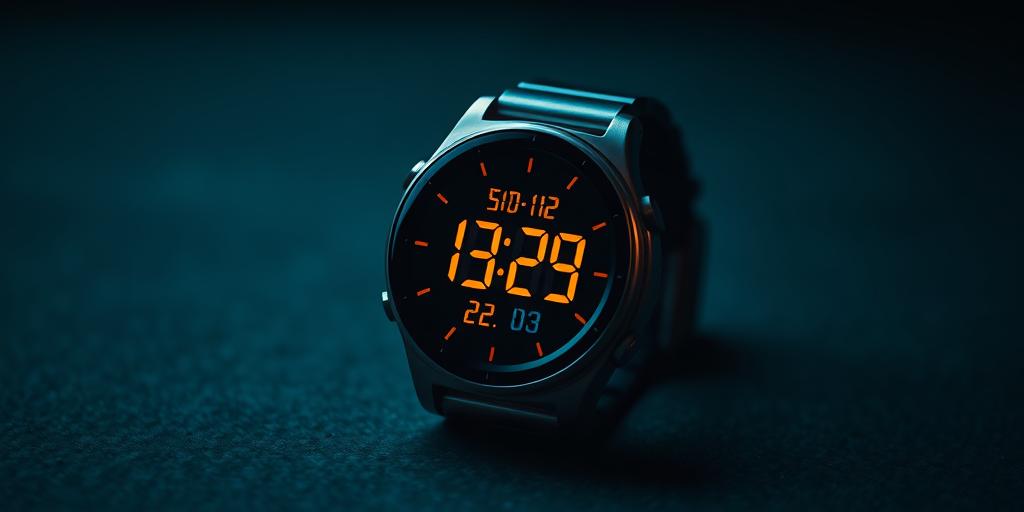Did you know that the clunky, sometimes unreliable smartwatches of yesteryear laid the groundwork for today’s sophisticated Internet of Things (IoT)? It’s true! From their humble beginnings, these early pioneers blazed the trail for the interconnected world we inhabit today, paving the way for a future where our devices communicate seamlessly with each other, collecting and sharing data in ways that were once confined to the realm of science fiction. Prepare to be amazed as we journey back in time and explore how those early smartwatches weren’t just time-telling contraptions; they were the unsung heroes of the IoT revolution!
The Dawn of Smartwatches: More Than Just Time-Telling
The early smartwatches of the late 20th and early 21st centuries may seem primitive by today’s standards, but they were revolutionary in their own right. These devices weren’t simply about telling the time; they represented a new era of wearable technology, introducing concepts that would shape the future of interconnected devices. Think about it: the ability to receive notifications, track basic fitness data, and interact with a small screen on your wrist was mind-blowing back then. It was the beginning of the journey towards the personalized, information-rich world we have today.
Early Features and Limitations
Early smartwatches often lacked the sleek designs and comprehensive features of their modern counterparts. Battery life was a major limitation, often requiring daily or even twice-daily charging. Connectivity was also a challenge, with some models relying on infrared or short-range Bluetooth to communicate with other devices. However, their very existence marked a significant step towards a future where technology would become intricately woven into our daily lives, laying the groundwork for the proliferation of smart devices that characterize the modern IoT landscape. These early models, though imperfect, successfully integrated basic computing power and limited connectivity into wearable technology – the first tentative steps toward the smartwatch-internet-of-things convergence.
From Wrist-Bound Innovation to the IoT Ecosystem
The journey from those early smartwatches to the complex IoT ecosystem we know today has been one of remarkable technological advancement and paradigm shifts. These original watches were, in their essence, microcomputers strapped to your wrist and, while primitive, they fostered ideas which would later form the cornerstone of the IoT. The miniaturization of computing power, the advancement of wireless communication, and the development of sensors all played crucial roles in this evolution. This created an environment where interconnected devices could share information seamlessly and securely, creating the IoT.
The Role of Miniaturization and Wireless Communication
The ability to shrink computing power and wireless connectivity down to a size small enough to fit on a wrist was a fundamental breakthrough. Without this innovation, the vision of interconnected devices would remain an unachievable dream. Progress in both silicon technology (decreasing chip sizes and increasing processing power) and wireless technologies such as Bluetooth, Wi-Fi, and cellular data, created the building blocks for wearable devices and their connection to the larger IoT infrastructure. As this technology was miniaturized and made more efficient, it became possible to embed sensors and communication modules into a wider range of devices.
The Impact of Sensor Technology and Data Analytics
Early smartwatches often incorporated basic sensors for tracking steps or heart rate. However, the development of more sophisticated sensor technology paved the way for the wide range of applications we see in the IoT today. From environmental sensors monitoring air quality to health sensors tracking vital signs remotely, this technological evolution has been critical. This data, previously unavailable or unmanageable, is now accessible and analyzable, creating insights into many aspects of our lives and surroundings. Today’s smartwatches are the direct descendants of these early models, showcasing the exponential growth of the technology and its integration within our lives.
The Rise of Data-Driven Insights
The data collected by IoT devices, including smartwatches, is not just raw information; it’s a treasure trove of valuable insights. These insights can be used to improve healthcare, enhance security, optimize energy consumption, and countless other applications. Data analytics have become essential for extracting meaningful information from the huge volumes of data generated by the IoT, enabling more informed decisions and creating more efficient systems. Modern smartwatches often sync directly with health apps and fitness trackers, demonstrating the advancement from basic step counting to detailed analysis of physiological data. Data that can influence decisions about physical fitness, preventative healthcare, and so much more.
Smartwatches: A Cornerstone of the Connected Future
Smartwatches are not simply a standalone technology; they are integral components of the broader IoT ecosystem. They serve as a crucial link between the user and the vast network of interconnected devices and sensors. Their ability to monitor personal data, relay information, and respond to notifications highlights their significance. From health monitoring to security systems, smartwatches are becoming increasingly integrated into our daily routines and will continue to play a key role in shaping the connected future.
The Future of Wearable Technology and the IoT
The future of smartwatches and the IoT is incredibly promising. Expect to see continued advancements in miniaturization, sensor technology, data processing, and battery life. The integration of artificial intelligence (AI) and machine learning (ML) will enable devices to learn user preferences and provide more personalized experiences, leading to smart homes, smart cities and other exciting developments. We are on the verge of a fully interconnected world where technology makes our lives easier, safer, and more convenient – and it all started with that first clunky smartwatch.
Ready to dive deeper into the exciting world of wearable technology and its role in the Internet of Things? Click here to explore our in-depth resources!




